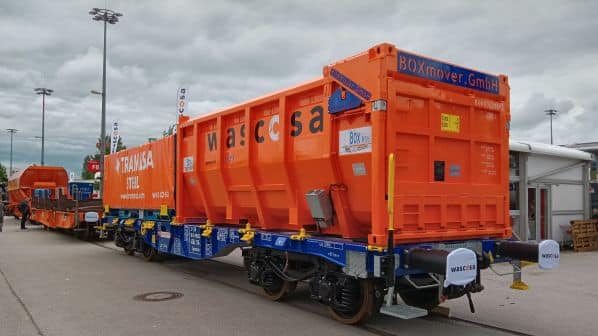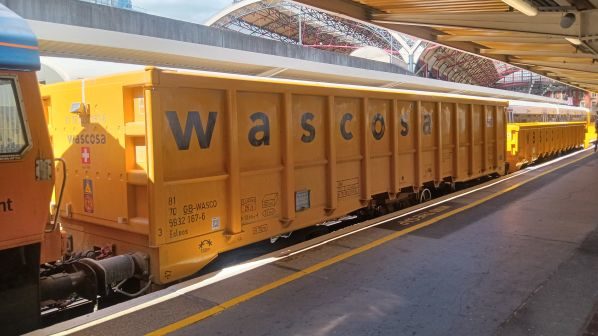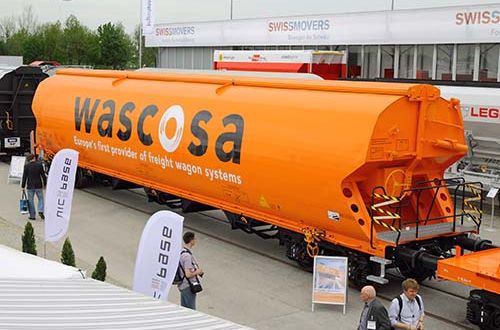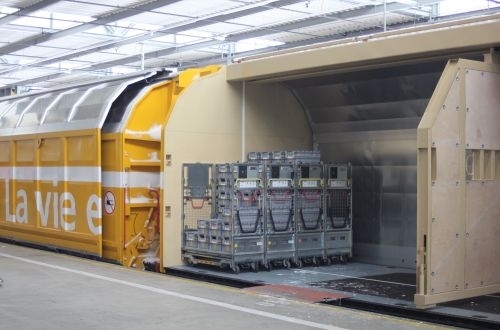IRJ at Transport Logistic 2023: Leasing company Wascosa has presented the prototype wagon forming the basis of its Flex Freight System (FFS) 2.0 at the Transport Logistic trade fair in Munich, alongside other innovative members of its wagon fleet.
FFS 2.0 is based on a 40ft type Sgmmnss wagon that can carry a range of removable bodies such as a 20ft steel coil container, a 20ft tank container and a 40ft box for bulk commodities including aggregates.
Wascosa says that the flexible FFS 2.0 system will enable it to meet customers’ needs with a significantly shorter time to market. Development has been underway for 10 years and has included new, modular wagon construction techniques, developed in collaboration with Boxmover which has extensive experience in the road vehicle industry.
New automated production technology has reduced the time taken to weld the seams on a wagon underframe to between 65 and 100 hours, compared with up to 300 hours on a conventional production line.
Wascosa CEO, Ms Iris Hilb, says that the modular design “enables greater flexibility in procurement and above all a faster time to market, which is a key factor for our customers.”
“Until now, we have had to deal with long lead times,” she says.
The prototype FFS 2.0 wagon is now in the final stages of the approvals process. This is expected to be completed shortly, with the first deliveries to customers to follow in mid-2024.
The new design is prepared for retrofitting the Digital Automatic Coupler (DAC), and will be available in small batch sizes, Wascosa says.
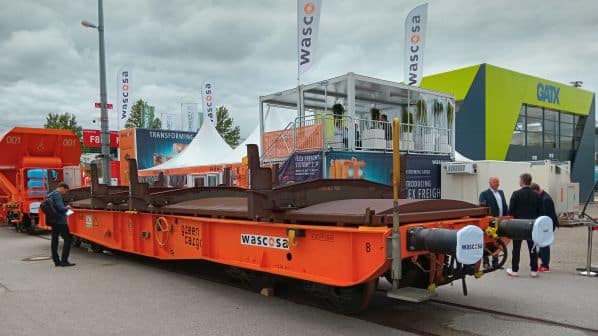
Over 1000 wagons of the first generation of FFS are now in service, including a 41ft type Sgmmnss wagon that was also on display at Transport Logistic.
This is equipped with two 20ft cassettes and is used by Green Cargo of Sweden to carry hot steel slabs at temperatures of up to 800°C.
The wagon has a specialised braking system that enables it to carry a payload of 82.9 tonnes at speeds of up to 100km/h. Wascosa says that payload has been optimised by the short length of the vehicle, which is 13,900mm over its buffers, combined with high load capacity.
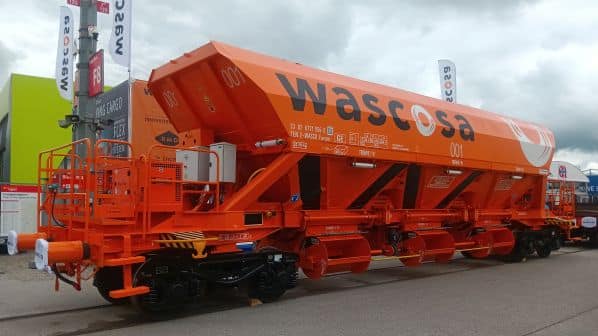
For clients in the infrastructure sector, Wascosa has developed Ballast 2.0, a type Fanps ballast wagon equipped with an electrically-powered unloading system with radio remote control and 360° lighting by means of 14 LEDs.
Both features contribute to improving worker safety during track renewal work, which is often carried out during overnight possessions, removing the need for the manual control of ballast unloading as the train is in motion.
The remote control system enables a worker walking alongside the train to control the opening and closing of the three ballast hoppers on the wagon, which a have a total capacity of 60m3, as well as the three rotating cylinders on each side of the wagon which direct the ballast to either between the rails or either side of the track.
Wascosa acquired 197 Fanps wagons in 2017 and the first batch of 30 was equipped with the new system by Ateliers de Joigny. There were delivered to French track renewals contractor Transalp Renouvellement in early 2022.
Using Ballast 2.0 has enabled Transalp to replace 1km of rail, sleepers and ballast in a single six-hour night shift. As well as the safety benefits, more accurate control of ballast distribution avoids wastage, with Wascosa pointing to a potential 7% saving on the wagon leasing cost from this factor alone.
Further refinements to Ballast 2.0 include a water mist system to supress dust during ballasting operations.
